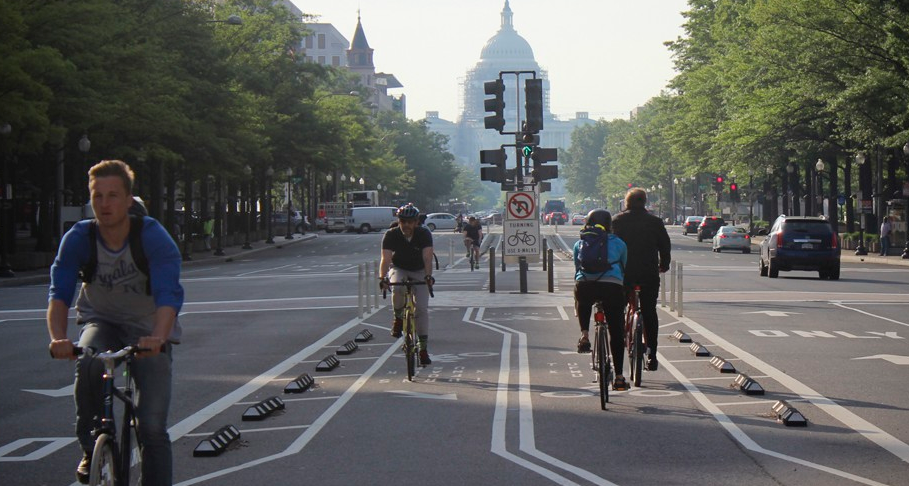New Transportation Guide Launched by Architect Group
A new guide on transportation launched by the American Society of Landscape Architects (ASLA) reports that transportation infrastructure is a significant component of the public realm, but the nation “can do better than build yet another car-centric landscape.”
The ASLA guide provides in-depth solutions and case studies to help communities create transportation systems that foster safe, equitable and resilient ways of getting around.
Its sections on regional, urban, neighborhood and street systems reflect seven key principles:
Low-emission: Sustainable transportation systems don’t contribute to climate change; instead, they encourage low-emission modes of transportation such as mass transit, biking, or walking. Sustainable land use practices such as transit oriented development facilitate multi-modal systems where residents can easily walk or bike to meet basic daily needs. Landscape architects plan regions, cities, and neighborhoods and design streets that support widespread adoption of low-emission transportation options.
Active: A lifestyle organized around human-powered transportation choices such as walking and biking is healthy. A 2016 report found that walkable, transit-oriented communities increased physical fitness and mental health. Residents of such communities were also more likely to meet or exceed daily physical activity recommendations. Landscape architects encourage active transportation by designing safe, pleasant routes for walking and biking.
Safe: The World Resources Institute estimates that more than 1 million lives could be saved annually from wider adoption of traffic calming measures such as lower speed limits, reduced lane widths, and protected medians. Landscape architects design for safety and help cities eliminate serious injuries and fatalities on roadways.
Equitable: Access to such healthy, sustainable transportation options should be viewed as a right. All residents—regardless of their income, race, age, disability, religion or national origin—should have access to affordable, safe, accessible, multi-modal transportation options that allow them to fully participate in the community. Landscape architects facilitate community-driven planning, policy making, and design that includes all members of the community, especially those most affected by poverty, communities of color, and historically-marginalized communities.
Resilient: Extreme weather events can easily shut down transportation networks. Multi-modal transportation systems are resilient to the uncertainties posed by climate change, such as rising temperatures, more frequent and intense storms, and sea level rise. Landscape architects design systems with multiple, interconnected transportation options that create redundancy and flexibility, qualities that help communities evacuate and rebuild quickly in the face of natural disasters.
Ecological: A sustainable transportation network is ecological, working with natural systems to capture and filter stormwater, reduce flooding, support pollinator species, strengthen biodiversity, and protect wildlife populations. With green infrastructure, wildlife crossings, pollinator highways, and environmentally-sensitive roadway alignment, design, and construction, landscape architects integrate nature into our transportation networks, reaping the benefits of ecosystem services while minimizing conflict between humans and wildlife.
Beautiful: As a major component of our landscape and public realm, transportation infrastructure should be beautiful, inviting, and memorable. Thoughtful design creates durable, lasting spaces that forge community identity, equity, and ownership. Landscape architects ensure that transportation infrastructure contributes to the aesthetic value of the built environment.
The sustainable transportation guide was shaped by an expert advisory panel, including Diane Jones Allen, D. Eng, ASLA, PLA, associate professor and program director of landscape architecture, University of Texas, Arlington, and principal, DesignJones LLC; Jean Senechal Biggs, ASLA, senior project manager, DKS Associates; and Robert Loftis, PLA, ASLA, associate landscape architect, MRWM Landscape Architects.
Category: General Update, News










